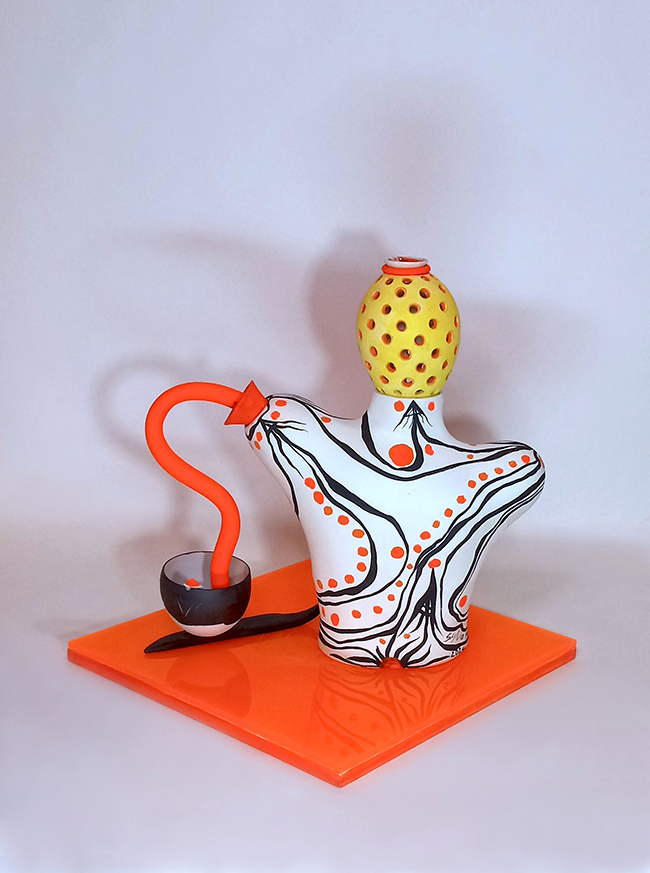Sylvia Nagy has cultivated a unique career that merges her skills in industrial technology, art, and ceramic design. Her journey began with an MFA in Silicet Industrial Technology and Art from Moholy-Nagy University in Budapest. She then continued to refine her talents at the Parsons School of Design, where she was invited to teach and even developed a specialized course on Mold Model Making in Plaster, reflecting her deep expertise in ceramics. Nagy’s artistic endeavors have taken her around the globe, with residencies in Japan, China, Germany, the USA, and Hungary, all of which have influenced her creative approach. As an elected member of the International Academy of Ceramics (IAC) in Geneva, Switzerland, her work has been recognized and included in museum collections in countries such as France, Spain, and Korea. Beyond the studio, Nagy has a passion for dance, fashion, styling, design trends, and photography.
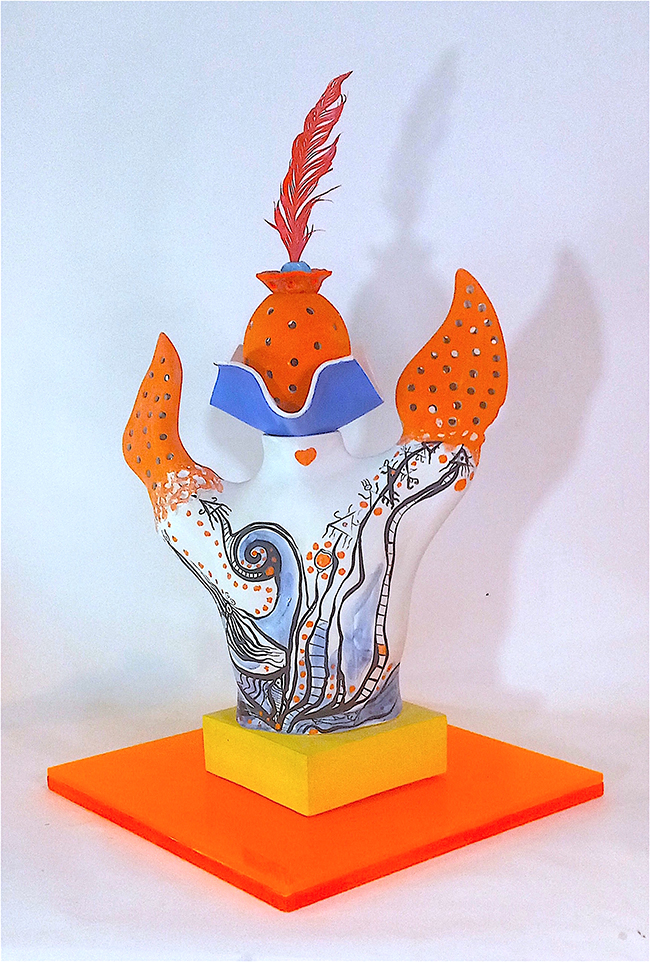
Nagy’s art serves as a meaningful exploration of the environmental challenges we face today. In her 2024 work “Torso-Pitcher,” crafted from slip-cast stoneware, she tackles the issue of ocean pollution. Standing 12 inches high and equally wide and deep, this sculpture underscores Nagy’s dedication to bringing attention to the harmful effects of plastic waste on marine ecosystems.
“Torso-Pitcher” is more than a visual creation—it is a message. The stoneware material, known for its strength and longevity, is intentionally chosen to represent the persistent nature of plastic pollution. Traditionally seen as a practical material, stoneware here symbolizes the relentless endurance of plastic in our environment. The torso’s form, often associated with human strength and fragility, is juxtaposed with the concept of a pitcher—a vessel meant to hold and sustain life. This contrast highlights the tragic irony of objects meant to nurture now contributing to environmental harm.
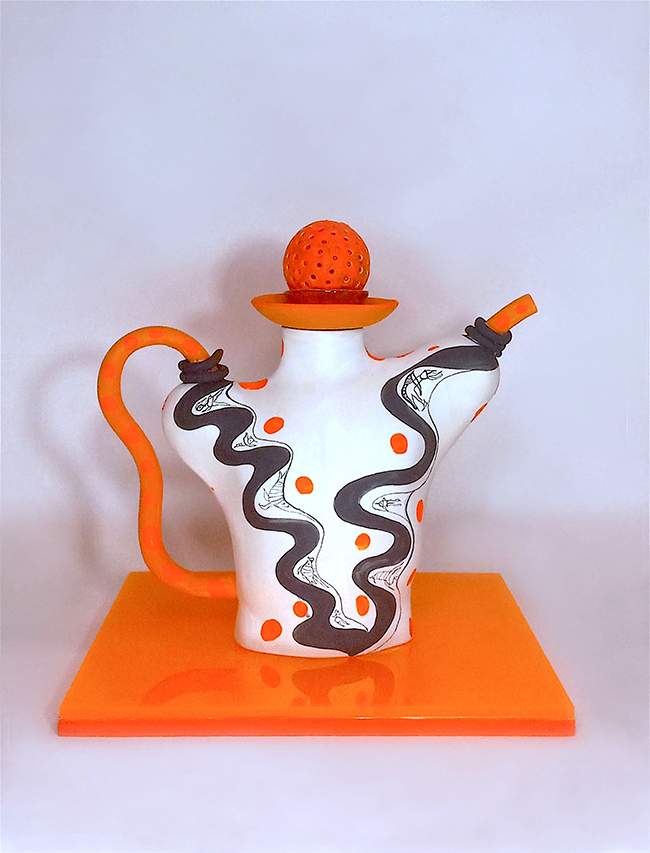
The tactile aspects of the stoneware enhance the work’s impact. The smooth texture of the material contrasts sharply with the harsh reality of plastic pollution, creating a tension that encourages viewers to think about their role in this crisis. The dimensions of the sculpture give it a solid presence, making it an intimate piece that nonetheless makes a significant statement about the scope of pollution.
In her related piece, “Heart of Torso-Pitcher,” also completed in 2024, Nagy further explores the theme of environmental responsibility. This sculpture, crafted from the same slip-cast stoneware and maintaining the same dimensions, continues the dialogue started by “Torso-Pitcher.” However, “Heart of Torso-Pitcher” focuses more on the personal responsibility we all bear and the choices we make every day.
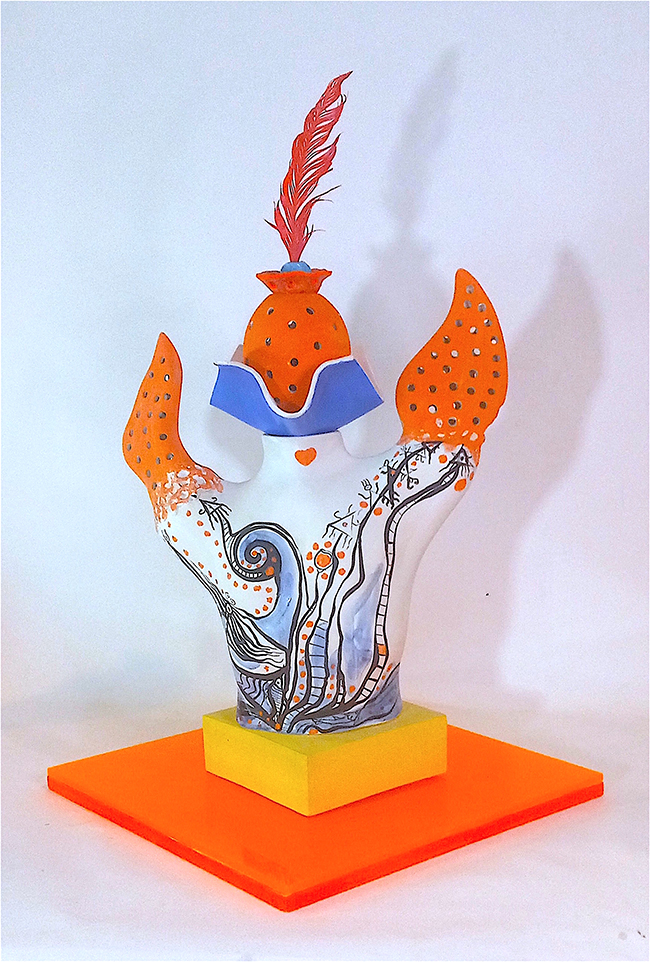
Inspired by her time in Japan, where recycling and minimizing waste are deeply ingrained practices, Nagy reflects these values in “Heart of Torso-Pitcher.” In a culture where space is limited, and waste is discouraged, the importance of reusable materials is clear. This cultural influence is evident in Nagy’s work, which urges a shift away from disposable plastics in favor of sustainable materials.
The “Heart” in the title signifies the core issue at hand—the need to adopt a mindset of sustainability and accountability. The piece encourages viewers to think about how their everyday choices impact the planet. By choosing materials like ceramic and glass over plastic, we can make a positive difference for future generations.
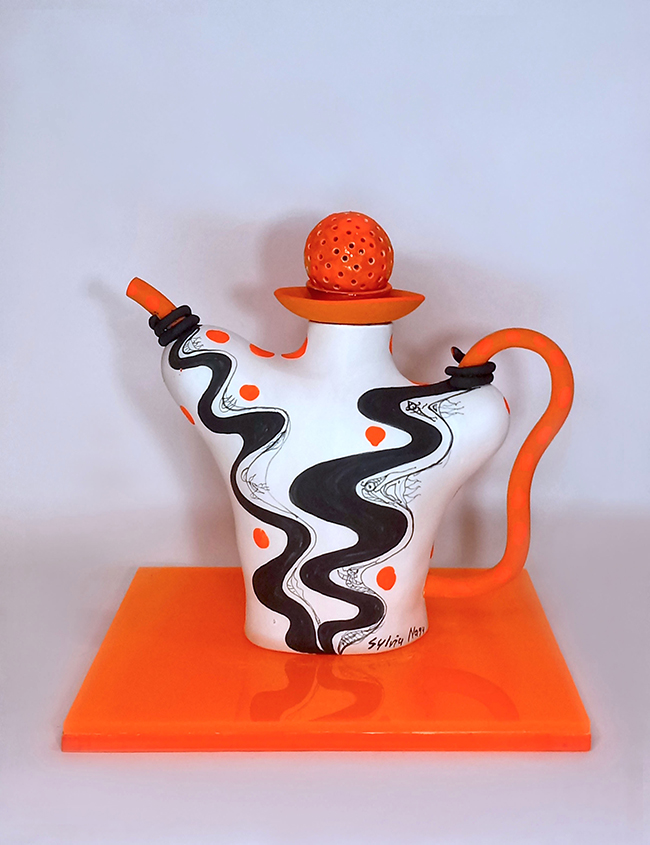
The physical weight and durability of the stoneware in “Heart of Torso-Pitcher” serve as reminders of the lasting effects of our choices, whether good or bad. The sculpture’s size makes it a reflective piece, prompting viewers to consider their place in the broader environmental landscape.
Sylvia Nagy’s art combines creativity with a strong environmental message. Her sculptures go beyond aesthetics to inspire action towards more sustainable living. Through the use of slip-cast stoneware, Nagy not only displays her craftsmanship but also draws attention to the pressing need for resilience and responsibility in how we interact with the world. Her work is a powerful reminder that while human actions have the potential to harm the planet, they also hold the power to protect and restore it.
